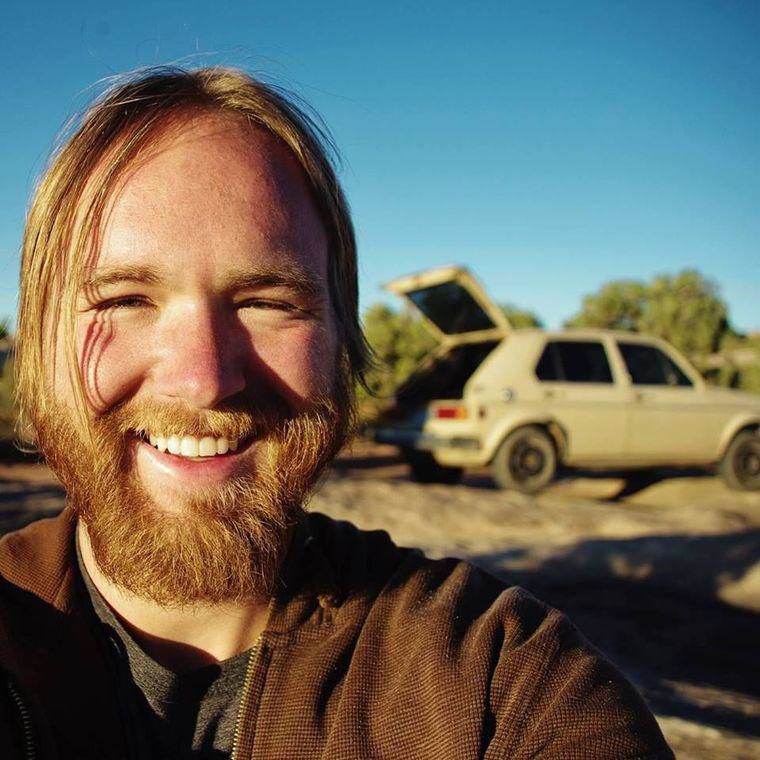Some information may be outdated.
People are leaving their houses and apartments behind in favor of life on the open road.
Homes are built inside vehicles like vans, buses, campers, minivans and RVs. All types of these mobile dwellings are seen in Moab; look for them parked at the Moab Information Center, around Swanny City Park and at the Grand County Public Library.
Who are these people? What would motivate a person to live in such a tiny space, often forgoing a shower, refrigerator and a toilet? There are as many reasons to live in a van as there are “vandwellers,” but all have common themes.
I choose to live in my vehicle. Some people feel miserable being stuck in one location and prefer to travel continually. It’s cheap. There are other people who have lost their home to a financial crisis and a van is better than sleeping on the street, though it’s still not what they’d prefer. For some, becoming a vandweller is trendy and they have the money to spend on a fancy rig.
One thing we all have in common is that for some reason or another, we feel it’s the best available option for our lives.
Personally, I am drawn to the combination of frugality and mobility. I’m content with minimal possessions and enjoy sleeping outdoors. Having free time to travel and reflect is more valuable to me than constantly earning money to pay hundreds of dollars for a living situation that I don’t want or need. Also, since I move around seasonally, a home on wheels is a foundation no matter where I go.
Vandwelling has grown from a “down by the river” joke into a glamorous millennial dream. Hashtag van life is an Instagram sensation: Images show $50,000 Sprinter vans decked out with the slickest gear, and beautiful young white heterosexual digital-nomad couples lounging half-nakedly in front of stunning ocean sunsets. “Now that’s living!” exclaim the adoring internet descriptions.
It seems romantic, but most vandwellers pee into jugs. Most shower infrequently, and experience their fair share of frustration and anxiety. Instagram stars usually spend more time curating their image than enjoying nature. There is magic on the road, and it’s worth trying if you’re interested, but anyone expecting a picture-perfect experience might be disappointed by the reality.
The number of vandwellers in the real-life and digital gathering places I participate in is 20-times greater now than it was three years ago. It has become a movement which cannot be stopped.
Moab has long attracted the sort of adventurous folks who embrace the “dirtbag” lifestyle, so vandwelling is nothing new here, but there’s another local factor increasing its prevalence: affordable long-term rentals in town are scarce, and at the same time the booming tourist crowd demands more low-wage workers. Where else is the workforce supposed to live?
It is illegal to camp in a van on city streets or residential property in Moab. The only reason I’ve heard for this prohibition is sanitation, but considering that so many new hotel rooms are being added in spite of an already over-taxed wastewater treatment plant, I find it hard to believe that sanitation is of high concern; and we’re not that disgusting in the first place.
Allowing vehicle camping could alleviate the competition for affordable rentals. RV parks are available but not ideal for most vandwellers. Symbiotic relationships could be formed with homeowners, exchanging the stability of a legitimate parking spot for extra driveway security or rent money. The reality is that people are doing it anyway, and they’re needlessly burdened with a constant fear of eviction.
If the current housing trend in Moab continues, people will have to commute daily from the closest towns, increasing traffic and pollution. No offense to those other towns, but most people choose to work in Moab because they want to live in Moab. Should that be a privilege only afforded to homeowners?
Vandwelling certainly isn’t the final solution to the affordable housing problem, as most people getting squeezed out of their homes don’t want to live in a van and shouldn’t have to, but it’s a partial solution that shouldn’t be ignored.
If the lifestyle were to be embraced rather than prohibited, vandwellers could provide some relief for Moab’s growing pains.
Joe Omundson has walked thousands of miles, from Mexico to Canada, and everywhere in between. He writes about travel, philosophy and society, and blogs about his experiences at selfobservinguniverse.com.
“Moab has long attracted the sort of adventurous folks who embrace the “dirtbag” lifestyle, so vandwelling is nothing new here, but there’s another local factor increasing its prevalence: affordable long-term rentals in town are scarce, and at the same time the booming tourist crowd demands more low-wage workers. Where else is the workforce supposed to live?”
Appreciate the coverage? Help keep local news alive.
Chip in to support the Moab Sun News.



